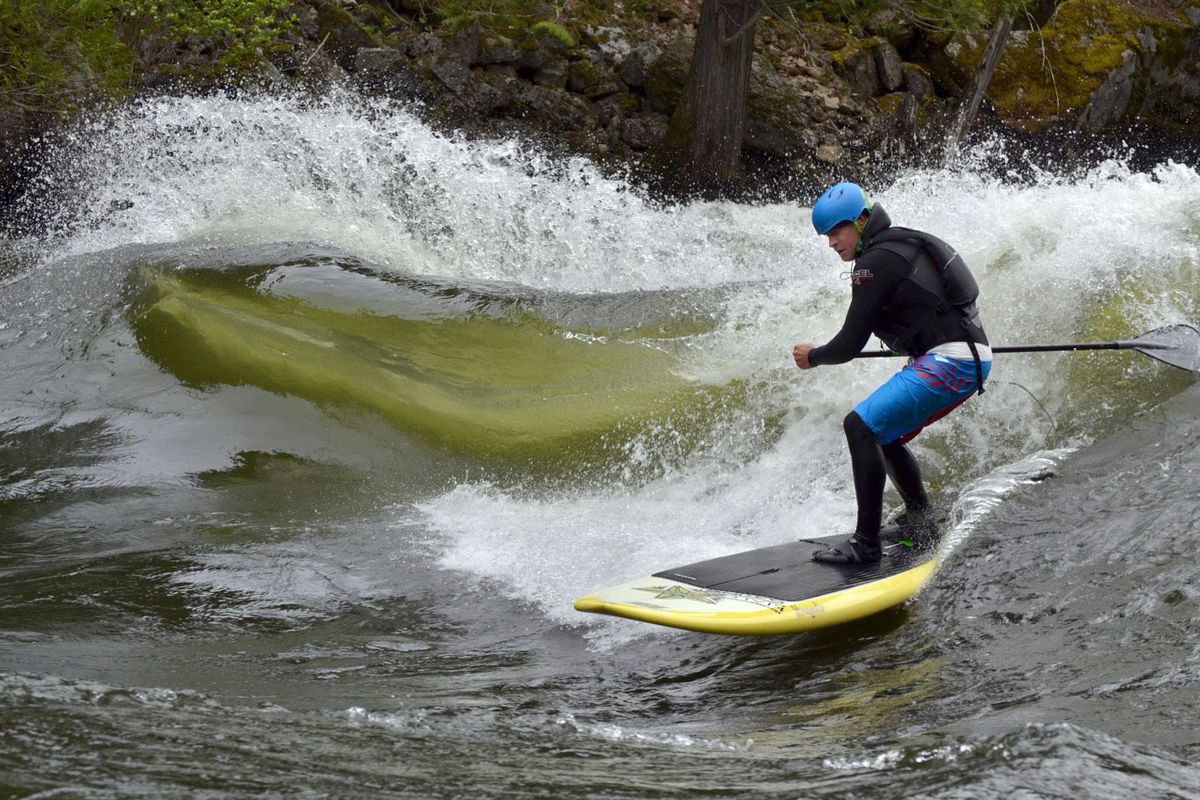Paddlers across the mainland noticed standing up
Ancient boating technique modernized by Hawaii surfers

A growing sport that combines elements of canoeing and surfing is riding a wave of enthusiasm through the Inland Northwest.
Stand up paddling (SUP) is an ancient utilitarian boating technique modernized by Hawaii surfers looking for an edge in catching waves.
In the past few years, the sport has been spreading across the mainland and adapted for every style, from leisurely cruises in placid waters to surfing frothing waves in the region’s whitewater rivers.
KB Brown and associates from Strongwater, a kayak and surf shop in Missoula, are on the cutting edge of applying SUP to surf big waves on the Lochsa, Clark Fork and Blackfoot rivers.
“It’s definitely a big leap from flatwater paddling to riding the river waves,” said Brown, an expert kayaker formerly of Post Falls.
“I would never claim to be an ocean surfer in a group of real surfers. But being a kayaker gives me a head start. Knowing how to hang onto a paddle and especially knowing the water is much of the battle on a river.”
Most people will get their introduction to SUP on flatwater. Many will never see a reason to go into rougher conditions.
Even on a lake, the sport can range from relaxing – you can bring your dog on the board – to a vigorous workout, said Rob Casey, a Seattle SUP/kayaking instructor and author.
Casey’s book, “Stand Up Paddling Flatwater to Surf and Rivers,” has just been published by Mountaineers Books.
He’s finding a market for his book and on-water classes as more people jump-start their knowledge of the new sport: what board to buy, how to get it to the water, efficient paddle strokes, handling different water conditions and more.
Brian Conn of Mountain Gear in Spokane said stand up paddling boards are constructed differently than surf boards. They weigh 20-40 pounds and range in price from about $400-1,200.
Paddles can be cheap or expensive depending on how much you want to pay for lightness. Length: generally 8-10 inches taller than your head.
“Anybody can get into this,” Casey said. “People are attracted for all kinds of reasons. The boards are lighter than canoes and kayaks; gear requirements are minimal.
“A kayaking friend is into it because of a bad back that prevents her from sitting for a long time.”
In placid warm lake water, SUP is reasonably intuitive and safe for a paddler wearing a good personal flotation device.
But as you venture farther from shore and in different waters, there’s more to consider, such as a wet or dry suit for cold water conditions, a helmet and water bottles.
“Paddlers who head out on boney, shallow rivers wear motocross equipment, complete with shin and knee guards,” Casey said.
“Within the first 30 minutes during a basic skills class, people realize the boards aren’t as tippy as they thought. Balance comes easier for some people, but these boards are quite stable.”
Refinements include using a torso rotation rather than just arms for efficient paddling.
“In my class, I teach how to turn a board 10 different ways,” Casey said. “Most people can’t turn a board at all.”
Bracing – using the paddle as a crutch to thwart a spill – is as important in SUP as it is in kayaking.
“I’ve seen the light go on when people realize they can lean forward, take a stroke and stay up instead of leaning back and falling over when a wave hits them,” he said.
Wind is the stand up paddle boarder’s Achilles’ heel, Casey said.
“In a strong wind, you act as a sail,” he said. “There are ways to tack or angle your direction, but if you’re heading directly into a headwind, you’re better off sitting or kneeling to paddle.”
Casey emphasizes the importance of gradually improving balance and skills, starting with flatwater.
“Pretty soon you’ll be able to ride waves in the wind on Lake Coeur d’Alene or Pend Oreille,” he said. “Anytime you see whitecaps, there are waves to ride.
“Then, going to moving water also needs to be done in little steps.”